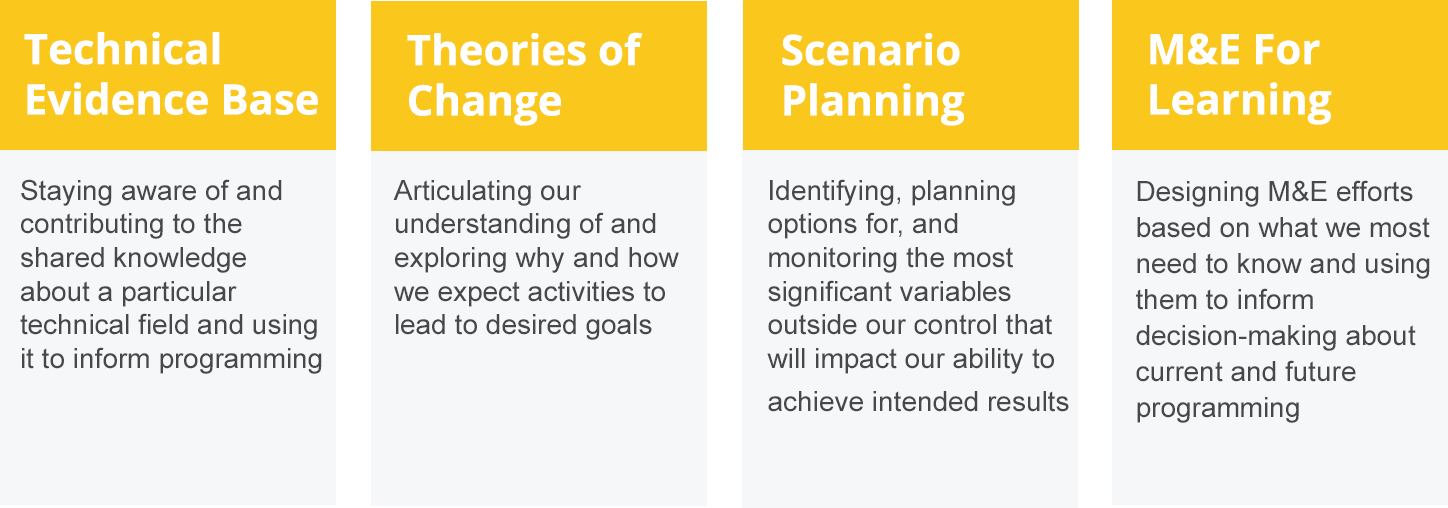
The evidence suggests that there myriad benefits to organizational learning, including adapting to changing conditions and improving organizational performance, which often begins with the individual and team benefits of providing purpose and mastery through learning. The literature identifies organizational assessments, evaluations, and reviews, especially by external organizations, as pivotal tools for learning. However, tools must be used to enable “double-loop” learning instead of “single-loop” learning in order to be most effective. “Single-loop” learning addresses specific symptoms rather than trying to understand why the problems came up in the first place, a practice known as “double-loop” learning. “Double-loop” learning is often linked to the ability of individuals and organizations to adapt programming in the most effective and sustainable way.
For example, in the development sector, a June 2016 World Bank study quantitatively analyzed the correlation between the quality of monitoring and evaluation (M&E) and project outcomes and found that good quality M&E is positively and significantly associated with project outcomes. The report identified factors that improve M&E quality including ensuring that M&E is used for learning that informs decisions and enables adapting when necessary and that M&E is incorporated into program management and not viewed as a separate activity. In the business sector, the closest corollary to M&E is the methodologies of Total Quality Management, Lean, Agile, and Six Sigma. There is substantial documented evidence of the positive impact these approaches have on improved financial, project management, and health-related outcomes.
In summary, the literature shows that learning, when incorporated into program design and structured to inform decision-making and adaptation, can lead to organizational success. Learning is an enabler in the following ways:
- Learning that focuses on underlying causes, assumptions, and systems is often linked to the ability of individuals, teams, and organizations to adapt programming in the most effective and sustainable way.
- Learning is more likely to take place in flatter, non-hierarchical organizations.
- Learning can occur through communities of practice that form organically to reflect and learn as a group.
- Learning is considerably constrained when tools, such as a theory of change, are viewed as accountability mechanisms rather than learning processes.
- Learning through the use of organizational assessments, evaluations, and reviews can lead to improved understanding and adaptation.
To read the full summary of the literature on learning, see our CLA Literature Review. Scroll down to view articles and cases on learning.

<< Back to CLA Evidence Dashboard
